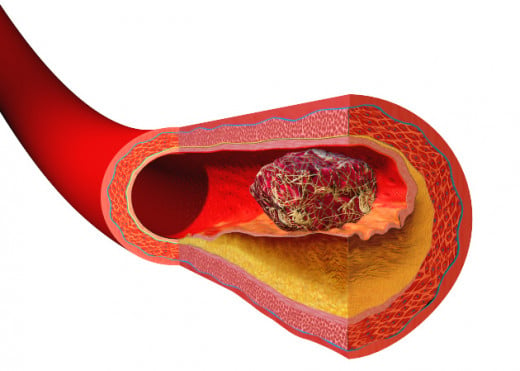Dangers Of Thrombophlebitis
What is thrombophlebitis? Well, let us break down this seemingly imposing medical word. The word "thrombo" means blood clot, whereas "phlebitis" means inflammation of the vein. So, thrombophlebitis basically means inflammation of the vein with clot formation. Thrombophlebitis is a potentially deadly condition and usually occurs in people above the age of 40. This can be a condition, which can show up no obvious symptoms. When a clot that has formed inside the vein breaks loose from its wall and travels to the lung, it can cause a deadly condition called pulmonary embolism. Usually, the veins involved are the veins of the leg and generally there can be 2 types of thrombophlebitis.
They are (1) SVT or superficial vein thrombosis and (2) DVT or deep vein thrombosis. As the names would suggest, superficial veins denote veins that are close to the skin surface, whereas deep veins are those veins that exist within the muscles. Lets examine the 2 forms in more detail.
SVT OR SUPERFICIAL VEIN THROMBOSIS:
As stated above, this type occurs in the superficial veins (of the leg usually). Some of the symptoms of SVT are:
- Feeling of heaviness or pain when you lower your leg.
- Throbbing sensation or a burning sensation just beneath your skin.
- Pain, redness and/or tenderness on the skin at the affected area.
- A vein that can be seen from outside and which feels painful to touch or is hard to touch.
Some of the factors that can contribute to SVT formation are:
- Pregnancy.
- Being obese.
- Condition of varicose veins.
- Being inactive for a long period of time, as in while traveling via plane, trains, long car drives, etc.
- Fracture or trauma to the leg.
- Any injuries to the veins.
- Smoking.
TREATMENT FOR SVTs OR SUPERFICIAL VEIN THROMBOSIS:
- Treatment usually involves anti-inflammatory medications such as aspirin, to be taken anywhere from 5 to 7 days.
- Treatment with moist heat, applied to the area of concern.
- Keeping the afflicted limb elevated, above the level of the heart until resolution of symptoms.
- Keeping the limb active by moving it.
- If a person is thought to be at particular risk for formation of clots, then they may be given drugs such as heparin, which are basically anticoagulants (i.e. drugs that prevent coagulation or blood clots).
DVT OR DEEP VEIN THROMBOSIS:
Again, as the name would suggest, DVT affects the deep vein (veins of the legs usually). As with SVTs, only some patients can have obvious symptoms of DVT. Usually, when there is a symptom, it is usually calf/thigh pain or tenderness. The factors that contribute to DVTs are mostly the same as that of SVTs.
To diagnose a DVT, doctors usually recommend having an ultrasound. If DVT is found, it is essential to take fast steps to tackle with this condition, which can be potentially fatal. As described above, the main concern is when the clot breaks free and travels and lodges itself in the lungs, a condition called pulmonary embolism.
The treatment for DVTs usually consist of the following:
- Anticoagulation: As described above, this is a process to prevent coagulation (blood clots) by using drugs that are called anticoagulants. These drugs thin the blood. Drugs that are used for this purpose are heparin and Coumadin. These medications can be prescribed to be continued for some months.
- Surgical intervention: In certain rare cases, surgery may be necessitated to extricate the clot.
- Inpatient monitoring: It may be recommended that you stay in the hospital for a few days, so that your condition and your response to anticoagulant drugs can be monitored.
- Outpatient treatment: If hospitalization is not advised, then self-injections of anticoagulants may be recommended and then later a switch to oral anticoagulants may be advised. The doctor would give you the specifics as to the self-injection.
- Use of compressive materials/devices: Pneumatic stockings and such might be recommended to help with the blood flow.

What Can You Do To Minimize Your Risk
DVT AND SVT PREVENTION:
Although, as stated above, people above 40 generally suffer from these conditions, that does not mean that those below 40 need to assume that it won't affect them at all. It is prudent to take the following precautions, irrespective of your age.
- It is a must to avoid sitting in one position for a long period of time.
- Having an active lifestyle helps. If you are the sedentary sort of person, get moving and get some exercise.
- Since obesity is a risk factor, try to maintain an ideal body weight.
- Say no to smoking - it is a contributing factor.
- Experts recommend moving your legs at least 5 minutes for every one hour when you are traveling long distances in a plan, train, car, etc.
- If you are bedridden, you should move your legs as often as possible to prevent blood from collecting.
- Do not wear tight stockings or clothes that can restrict blood flow.



